Research and Discussion on the Application of Logging Technology in Geological Exploration Engineering
DOI: 10.23977/erej.2023.070405 | Downloads: 53 | Views: 1892
Author(s)
Chao Zhong 1,2, Jing'an Lu 1,2, Dongju Kang 1,2, Yingfeng Xie 1,2
Affiliation(s)
1 Guangzhou Marine Geological Survey, China Geological Survey, Guangzhou, 511458, China
2 National Engineering Research Center of Gas Hydrate Exploration and Development, Guangzhou, 511458, China; Gas Hydrate Engineering Technology Center, China Geological Survey, Guangzhou, 511458, China
Corresponding Author
Chao ZhongABSTRACT
In this paper, the development history of geophysical logging technology was reviewed, the application status of logging technology in the geological exploration of hydrology, marine oil and gas, and marine natural gas hydrate was introduced, logging response characteristics and identification methods in various geological exploration projects were summarized, and the current situation and development trend of new logging technology was discussed. With the gradual deepening of complex and unconventional oil-gas exploration and development, there are an increasing number of highly deviated wells, horizontal wells, and vertical wells with complex well conditions, promoting the development of unconventional reservoir logging technology as the main logging technology at present. It is urgent to deeply explore basic logging theories, formation testing, downhole fluid analysis, petrophysical analysis and logging response experiments, accelerate the research and development of new logging technologies and equipment, improve the ability and level of logging evaluation for complex reservoirs, and effectively promote the quality and efficiency improvement of unconventional oil-gas exploration.
KEYWORDS
Logging; Hydrogeology; Oil-gas exploration; Natural gas hydrateCITE THIS PAPER
Chao Zhong, Jing'an Lu, Dongju Kang, Yingfeng Xie, Research and Discussion on the Application of Logging Technology in Geological Exploration Engineering. Environment, Resource and Ecology Journal (2023) Vol. 7: 43-51. DOI: http://dx.doi.org/10.23977/erej.2023.070405.
REFERENCES
[1] Zhao, L.L. Study on the application of logging process in oil and gas field development. Engineering Technology: Full Text Edition. 2016, 35, 280-281.(in Chinese)
[2] Lu, B.G., Xie, J.M. Geophysical exploration work for oil and gas in China-past and future. ACTA Geophysica Sinica. 1979, 22, 358-363. (in Chinese)
[3] Lu, B.G. The early history of geophysical exploration in petroleum industry (1939-1952). Oil geophysical prospecting. 1985, 20, 338 -343. (in Chinese)
[4] Chen, Z.C. The progress of geophysical exploration techniques. Progress in geophysics. 2000, 10, 1-19. (in Chinese)
[5] Lu, D.W., Fan, S.H. A survey on current foreign well logging technology.Well Logging Technology. 1997, 21, 377 -379. (in Chinese)
[6] Jin, D., et al. Review and prospect of logging technology development. Shaanxi Geophysical Anthology (VII) Geophysical Research and Practice in Western China Special Collection for the 20th Anniversary of the Establishment of Shaanxi Geophysical Society. Xi'an: Shaanxi Science and Technology Press. 2007, 29-30. (in Chinese)
[7] Cai, J. Application of well logging in hydrogeology, engineering geology and environmental geology. World Nonferrous Metals. 2021, 2, 182-183. (in Chinese)
[8] Wang, X.F. Analysis of the basis and application of geophysical survey method for investigating hydrogeology. Chinese construction science and technology. 2015, 3. (in Chinese)
[9] Lin, X.Y., et al. Modern hydrogeology. Geological Press. 2005, 179. (in Chinese)
[10] Wang, X.F. Analysis of the basis and application of geophysical survey method for investigating hydrogeology. Proceedings of the Academic Exchange Conference on Construction Technology and Management. Construction Technology and Management Organizing Committee. 2015, 231. (in Chinese)
[11] Jiang, Y.S. The property of Carbonate rock in geology and physics and the way of hydrologic well logging. Journal of Hebei Institute of Architecture and Technology. 2000, 17, 83-85. (in Chinese)
[12] Zhao, F.Z., et al. A geophysical logging method to detect the water mineralization intensity underground. Progress in Geophysics. 2002, 17, 551-558. (in Chinese)
[13] Wang, Z., et al. Geophysical method to detect mineralization degree of groundwater. Hydrogeology & Engineering Geology. 2003, 6, 33-36. (in Chinese)
[14] Liu, R.W. Soil moisture and groundwater: two sources of gravity variation. Translated World Selsmology. 1989, 6, 58-62. (in Chinese)
[15] Davis, K., Li, Y., Batzle, M. Time-lapse gravity monitoring: A systematic 4D approach with application to aquifer storage and recovery. Geophysics. 2008, 73, WA61-WA69.
[16] Oni, A.G., Eniola, P.J., Olorunfemi, M. O., et al. The magnetic method as a tool in groundwater investigation in a basement complex terrain: Modomo Southwest Nigeria as a case study. Applied Water Science. 2020, 10, 1-18.
[17] Zhang, X.G., Wang, J.Y. Application of gravity and magnetic data in groundwater survey. Groundwater. 1994, 16, 175-177. (in Chinese)
[18] Slater, L. Near surface electrical characterization of hydraulic conductivity: From Petrophysical properties to aquifer geometries-A review. Surveys in Geophysics. 2007, 28, 169-197.
[19] Long, F., Han, T.C. The application of ip method to groundwater exploration. Geophysical and geochemical exploration. 2002, 26, 422-424,432.
[20] He, W. The use of seismic method in finding bedrock groundwater. Geotechnical investigation and surveying. 1989, 3, 76-78.
[21] Murad, A., Baker, H., Mahmoud, S., et al. Detecting groundwater levels using the shallow seismic method: case study. Journal of Hydrologic Engineering. 2014, 19, 867-876.
[22] Sucre, O., Pohlmeier, A., Minière, A., et al. Low-field NMR logging sensor for measuring hydraulic parameters of model soils. Journal of Hydrology. 2011, 406, 30-38.
[23] Behroozmand, A.A., Keating, K., Auken, E. A review of the principles and applications of the NMR technique for near-surface characterization. Surveys in geophysics. 2015, 36, 27-85.
[24] Zhu, J.B. Research on key technologies of high-resolution magnetic resonance logging system for shallow hydrogeological parameters measurement. Jilin University. 2022. (in Chinese)
[25] Walsh, D., Turner, P., Grunewald, E., et al. A small‐diameter NMR logging tool for groundwater investigations. Groundwater. 2013, 51, 914-926.
[26] Spurlin, M.S., Barker, B.W., Cross, B.D., et al. Nuclear magnetic resonance logging: Example applications of an emerging tool for environmental investigations. Remediation Journal. 2019, 29, 63-73.
[27] Fay, E.L., Knight, R.J., Grunewald, E.D. A field study of nuclear magnetic resonance logging to quantify petroleum contamination in subsurface sediments. Geophysics. 2017, 82, 81-92.
[28] Dlugosch, R., Günther, T., Lukàcs, T., et al. Localization and identification of thin oil layers using a slim-borehole nuclear magnetic resonance tool. Geophysics. 2016, 81, WB109-WB118.
[29] Li, X.H. Practice and exploration of logging technology in oil and gas exploration and development. China Petroleum and Chemical Standards and Quality. 2018, 38, 154-155. (in Chinese)
[30] Yuan, H.Z., Lu D.W., Zhang, X.Y., Sun, J.M. An overvie w of recent advances in well logging technology. Progress in Geophysics. 2005, 3, 786-795.(in Chinese)
[31] Lu, H.S. Application and development analysis of well logging information in petroleum engineering. Petroleum Drilling Technology. 2012, 40, 1-7. (in Chinese)
[32] Jin, D., Wang, J.G., Zhang, X.Y., Sun, B.D. Situation and Direction of CNPC Well Logging Technologies Development. Logging technology. 2007, 2, 95-98. (in Chinese)
[33] Qin, Y.C., Zhao, J.L., Li, Y. Application of logging technology in oil and gas exploration and development. Petrochemical Industry Technology. 2016, 23, 259. (in Chinese)
[34] Hu, X.Y., Fu, C., Wu, H.S., He, S.L., Zhu, J.T. Integrated application of new logging technology in recognition and evaluation of low resistivity reservoirs. Journal of oil and gas technology. 2007, 3, 403-405+519.(in Chinese)
[35] Chu, Z.H. Principles of acoustic logging. Beijing: Petroleum Industry Press. 1987. (in Chinese)
[36] Xiao, L.Z. Nuclear magnetic resonance imaging logging and rock nuclear magnetic resonance and their applications. Beijing Science Press. 1998. (in Chinese)
[37] Geng, Q.X., Zhong, X.S. Oilfield development logging technology. Dongying: Petroleum University Press. 1992. (in Chinese)
[38] Liu, C.L., Meng, Q.G., Li, C.F., et al. Characterization of natural gas hydrate and its deposits recovered from the northern slope of the South China Sea. Earth Science Frontiers. 2017, 24, 41-50.
[39] Zhou, J., Son,g Y.J., Jiang, Y.J., et al. The Research Progress of Well Logging Evaluation of Marine Natural Gas Hydrate. Journal of Southwest Petroleum University (Science & Technology Edition). 2020, 42, 85-93.
[40] Mo, X.W., Lu, J.A., Sha, Z.B., et al. A new method for gas hydrate saturation estimation using well logging data. Journal of JilinUniversity (Earth Science Edition). 2012, 42, 921-927.
[41] Liu, J., Zhang, J.Z., Sun, Y.B., et al.Gas hydrate reservoir parameter evaluation using logging data in the Shenhu area, South China Sea. Natural Gas Geoscience. 2017, 28, 164-172.
[42] Wang, Z.W., Li, Z.B., Liu, J.H. Logging identification and evaluation methods for gas hydrate. Marine Geology & Quaternary Geology. 2003, 23, 97-102.
[43] Fan, Y.R., Zhu, X.J. Review on logging responses and evaluation methods of natural gas hydrated reservoir. Well Logging Technology. 2011, 35, 104-111.
[44] Ning, F.L., Liu, L., Li, S., et al Well logging assessment of natural gas hydrate reservoirs and relevant influential factors. Acta Petrolei Sinica. 2013, 34, 591-606.
[45] Ma, L., Mo, X.W., Lu, J.A., et al. Log interpretation of natural gas hydrate and its case history in South China Sea.Well Logging Technology. 2013, 37, 280-284.
[46] Harmon, W.L. Role of petrographic analysis in wireline log interpretations. AAPG South Section, Dallas, Texas, USA. 1987.
[47] Goldberg & David. Well logging for physical properties: a handbook for geophysicists, geologists, and engineers. Hoboken: Hohn Wiley & Sons. 2013, 82, 249.
[48] Liu, X.G., Sun, J.M., Guo, Y.F. Application of elemental capture spectroscopy to reservoir evaluation. Well Logging Technology. 2005, 29, 237-239.
[49] Han, L., Zhang, J.M., Xing, Y.J., Pan, B.Z., Wang, M.Y. Identification of igneous rock lithology using ECS logging and QAPF. Well Logging Technology. 2010, 34, 48-49.
[50] Yuan, Z.G., Chu, Z.H. The application of elemental capture spectroscopy (ECS) logging in Wangzhuang heavy oil reservoirs. Nuclear Electronics & Detection Technology. 2003, 23, 417-422.
[51] Yong, S.H. Optimized logging interpretation. Dongying: Petroleum University Press. 1995.
[52] Kang, D.J., Liang, J.Q., Kuang, Z.G., et al. Application of elemental capture spectroscopy logging in hydrate reservoir evaluation in the Shenhu sea area. Natural gas industry. 2018, 38, 54-60.
[53] Kang, D.J., Lu, J.A., Zhang, Z.J., et al. Fine-grained gas hydrate reservoir properties estimated from well logs and lab measurements at the Shenhu gas hydrate production test site, the northern slope of the South China sea.Marine and Petroleum Geology. 2020, 122, 1-5.
[54] Qin, X.W., Lu, J.A., Lu, H.L., et al. Coexistence of natural gas hydrate, free gas and water in the gas hydrate system in the Shenhu Area, South China Sea. China Geology. 2020, 3, 210 -220.
[55] Xie, Y.F., Lu, J.A., Kuang, Z.G., et al. Well Logging Evaluation for Three-Phase Zone with Gas Hydrate in the Shenhu Area, South China Sea. Geoscience. 2022, 36, 182-192.
| Downloads: | 5979 |
|---|---|
| Visits: | 448544 |
Sponsors, Associates, and Links
-
International Journal of Geological Resources and Geological Engineering
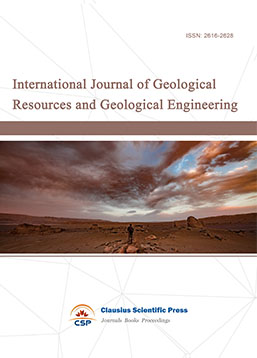
-
Big Geospatial Data and Data Science

-
Solid Earth and Space Physics

-
Environment and Climate Protection
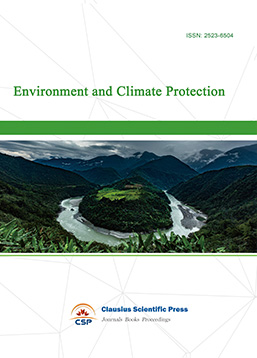
-
Journal of Cartography and Geographic Information Systems

-
Offshore and Polar Engineering

-
Physical and Human Geography
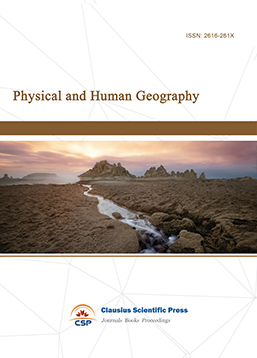
-
Journal of Atmospheric Physics and Atmospheric Environment
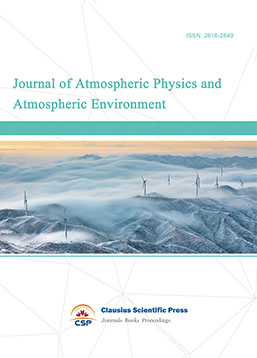
-
Trends in Meteorology

-
Journal of Coastal Engineering Research
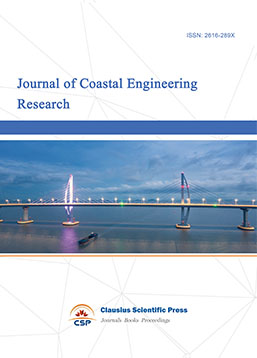
-
Focus on Plant Protection
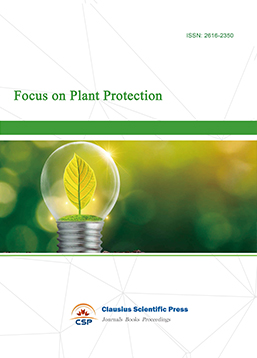
-
Toxicology and Health of Environment
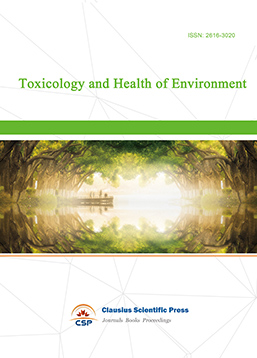
-
Geoscience and Remote Sensing
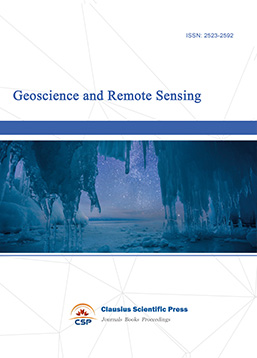
-
Advances in Physical Oceanography

-
Biology, Chemistry, and Geology in Marine
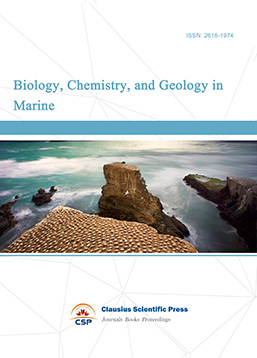
-
Water-Soil, Biological Environment and Energy

-
Geodesy and Geophysics

-
Journal of Structural and Quaternary Geology
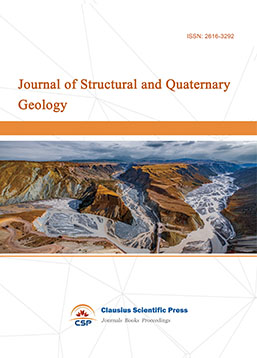
-
Journal of Sedimentary Geology

-
International Journal of Polar Social Research and Review


 Download as PDF
Download as PDF